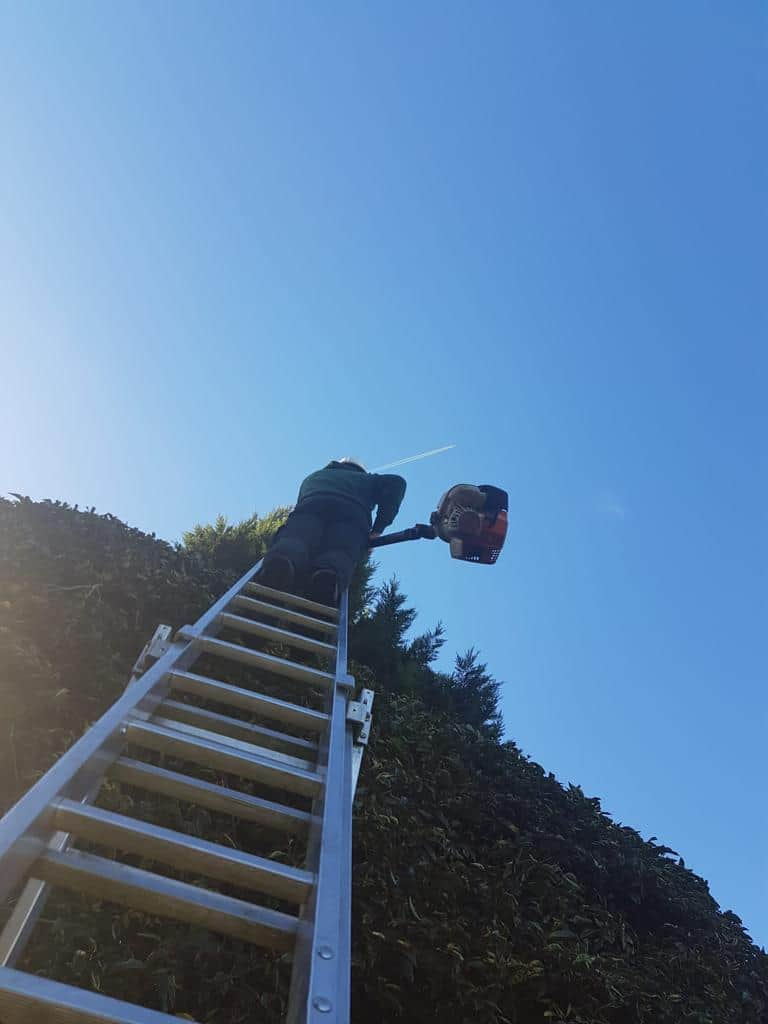Understanding Sudden Leaning in Trees
A tree leaning slightly isn’t always a concern, especially if it has grown that way gradually over time. However, when a tree begins to lean suddenly, it’s often a sign that something is seriously wrong. Whether it’s due to environmental changes, root damage, or soil instability, a leaning tree can quickly become a safety hazard if not properly assessed.
At LM Tree Surgery Eastleigh, we frequently inspect trees across Eastleigh and the wider Hampshire area that have developed a sudden lean. Understanding the causes — and taking the right corrective action — can prevent property damage and preserve the health of your trees.
Common Causes of a Sudden Tree Lean
1. Root Damage or Failure
The most frequent cause of a sudden lean is root instability. Roots anchor the tree and draw in nutrients from the soil. When they are damaged, weakened, or diseased, the entire tree loses its ability to stay upright. Common root problems include:
- Root rot caused by poor drainage or fungal infection.
- Construction damage, such as soil compaction or excavation near the root zone.
- Storm or wind disturbance, which can loosen roots from the soil.
A tree that suddenly begins to tilt often has partially lifted roots on one side — a clear sign that immediate attention is required.
2. Soil Erosion or Saturation
Heavy rainfall, flooding, or poor drainage can wash away or loosen the soil around the roots, leading to instability. Similarly, overly saturated soil makes it difficult for roots to maintain a firm hold, especially on slopes or embankments.
If your garden in Eastleigh experiences frequent waterlogging, trees in the affected areas are at higher risk of leaning.
3. High Winds or Storms
Strong winds can uproot even mature, healthy trees — particularly if they are top-heavy or have shallow root systems. After a storm, it’s important to check whether the lean has worsened, as trees under stress can continue to shift over time.
4. Uneven Growth or Heavy Canopy
Sometimes, a tree leans because of an imbalance in its canopy weight. Trees growing in crowded environments, or those leaning towards sunlight, may develop uneven branch growth. Over time, this uneven weight distribution can cause structural stress, particularly after rain when the canopy becomes heavier.
5. Decay or Weakness in the Trunk
Internal decay can weaken the structure of the trunk, causing a tree to lose stability and lean. This type of problem often develops quietly and may not be visible from the outside. Look for signs such as cracks, hollow areas, or fungal growth at the base.
How to Correct a Leaning Tree
The right approach depends on the tree’s size, age, and the cause of the lean. Here’s how LM Tree Surgery Eastleigh typically addresses such situations:
1. Early Intervention for Young Trees
If the tree is still young and flexible, it may be possible to correct its position using stakes or support cables. Our team carefully repositions the tree and secures it while ensuring roots have space to regrow naturally. This must be done with care — forcing a tree upright too quickly can cause more harm than good.
2. Assessing Root and Soil Conditions
For established trees, a thorough inspection of the root system and surrounding soil is essential. If root damage or soil erosion is identified, we take steps to stabilise the base, improve drainage, and strengthen the soil structure through aeration and mulching.
3. Canopy Reduction or Rebalancing
When the lean results from an uneven canopy, selective pruning can help reduce weight on one side and restore balance. This not only improves appearance but also lessens wind resistance, reducing the risk of further leaning.
4. Structural Support and Bracing
For valuable mature trees, installing support cables or braces can prevent further movement while allowing the tree to strengthen naturally over time. This is particularly effective for trees that are otherwise healthy but have developed a lean due to environmental stress.
5. Removal as a Last Resort
If a tree is severely leaning and poses a clear safety risk — particularly near homes, roads, or public spaces — professional removal may be the safest solution. At LM Tree Surgery Eastleigh, we always explore corrective methods first, but when stability cannot be guaranteed, safe removal prevents potential property damage or injury.
Signs That Require Immediate Attention
Homeowners should seek professional help immediately if:
- The lean appeared suddenly after a storm or heavy rain.
- Cracks have formed in the soil around the base.
- Roots are visibly lifting on one side.
- The tree is leaning towards a building or walkway.
- There are signs of decay, hollowing, or fungal growth.
Ignoring these signs can allow the situation to worsen, turning a manageable lean into a dangerous problem.
Why Professional Assessment Is Essential
Attempting to correct a leaning tree without expert advice can easily lead to further damage or even complete collapse. Every tree responds differently depending on its species, age, and condition. A professional assessment from LM Tree Surgery Eastleigh ensures that the safest and most effective method is chosen for each individual case.
We combine detailed inspections with advanced tree surgery techniques to restore balance and preserve long-term stability wherever possible.
Conclusion
A leaning tree is more than just a visual concern — it’s often an early warning of structural or environmental problems. By addressing the issue quickly and professionally, you can protect your property and extend the life of your trees.
LM Tree Surgery Eastleigh provides expert advice and corrective solutions for leaning trees throughout Eastleigh and the wider Hampshire area. Our team ensures every tree receives the care it needs to remain strong, stable, and safe for years to come.
Call us on: 023 8001 2396
Click here to find out more about LM Tree Surgery Eastleigh
Click here to complete our contact form and see how we can help with your tree needs.

